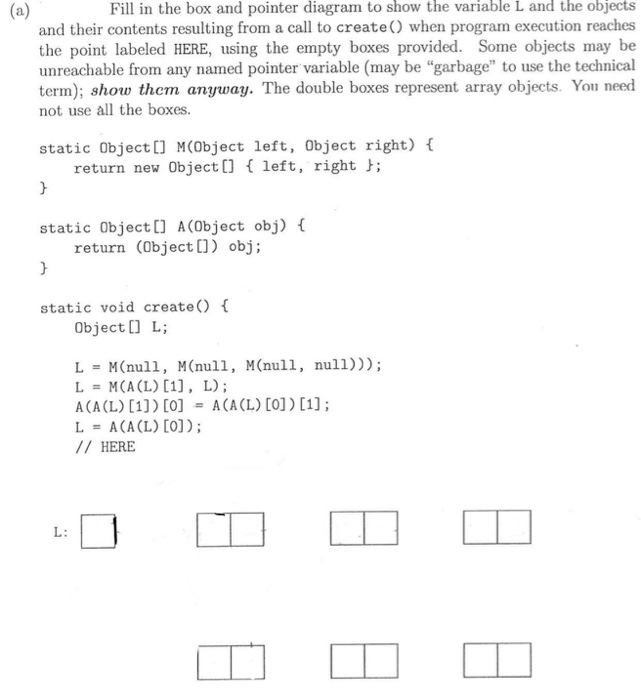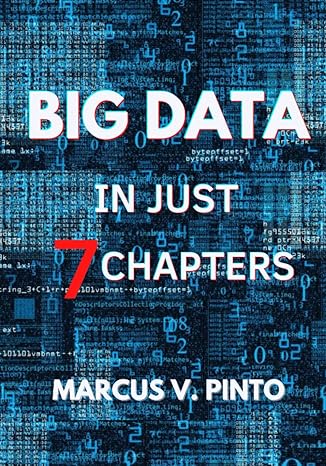Answered step by step
Verified Expert Solution
Question
1 Approved Answer
using Java, show this box / pointer diagram (practice exam) Fill in the box and pointer diagram to show the variable L and the objects
using Java, show this box / pointer diagram (practice exam) 
Fill in the box and pointer diagram to show the variable L and the objects and their contents resulting from a call to create() when program execution reaches the point labeled HERE, using the empty boxes provided. Some objects may be unreachable from any named pointer variable (may be "garbage to use the technical term); show them anyway. The double boxes represent array objects. You need not use all the boxes. static Object[] M(Object left, Object right) { return new Object () { left, right }; static Object ( A(Object obj) { return (Object[]) obj; static void create() { Object[] L; L = M(null, M(null, M(null, null)); L = M(A(L) (1), L); A (A(L) [1])[0] = A (A(L) [O]) [1]; L = A(A(L)[0]); // HERE Fill in the box and pointer diagram to show the variable L and the objects and their contents resulting from a call to create() when program execution reaches the point labeled HERE, using the empty boxes provided. Some objects may be unreachable from any named pointer variable (may be "garbage to use the technical term); show them anyway. The double boxes represent array objects. You need not use all the boxes. static Object[] M(Object left, Object right) { return new Object () { left, right }; static Object ( A(Object obj) { return (Object[]) obj; static void create() { Object[] L; L = M(null, M(null, M(null, null)); L = M(A(L) (1), L); A (A(L) [1])[0] = A (A(L) [O]) [1]; L = A(A(L)[0]); // HERE 
Step by Step Solution
There are 3 Steps involved in it
Step: 1

Get Instant Access to Expert-Tailored Solutions
See step-by-step solutions with expert insights and AI powered tools for academic success
Step: 2

Step: 3

Ace Your Homework with AI
Get the answers you need in no time with our AI-driven, step-by-step assistance
Get Started


